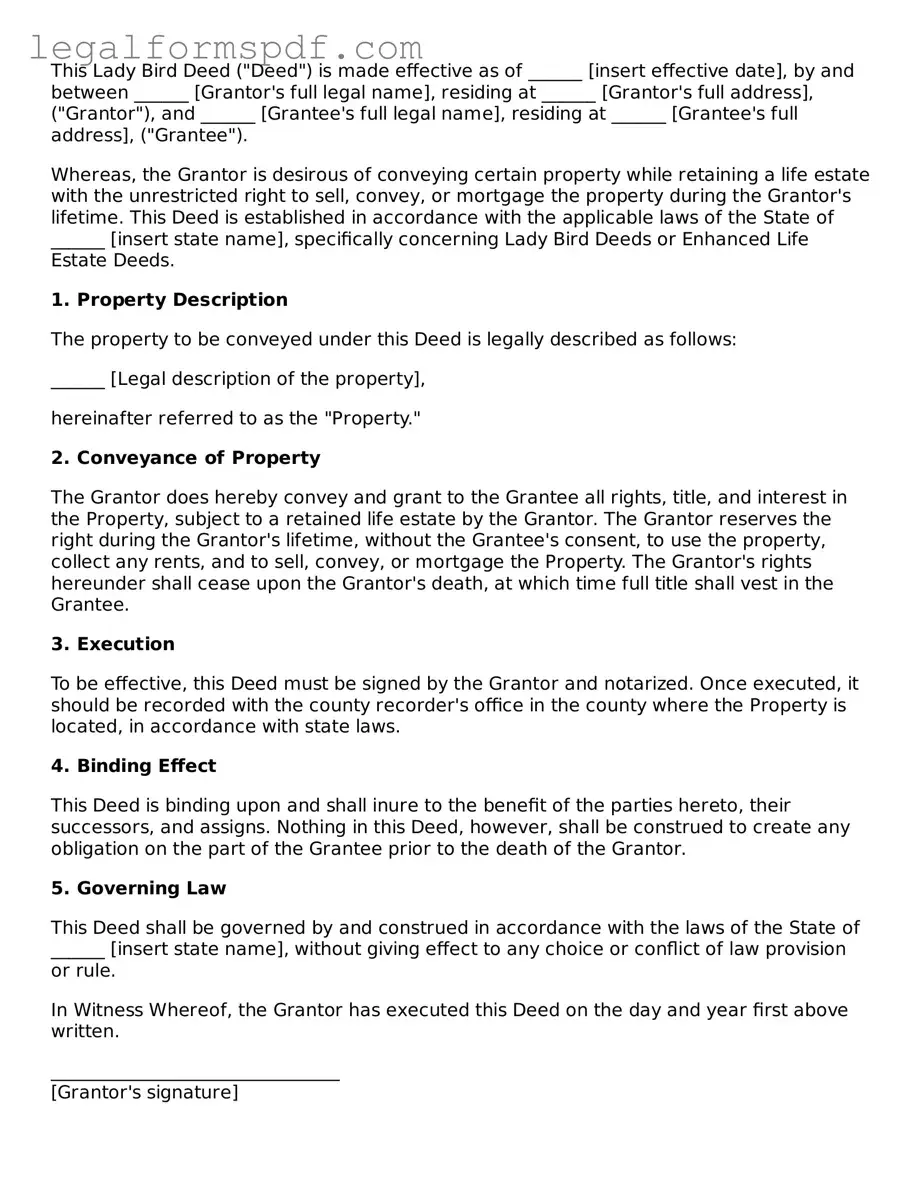This Lady Bird Deed ("Deed") is made effective as of ______ [insert effective date], by and between ______ [Grantor's full legal name], residing at ______ [Grantor's full address], ("Grantor"), and ______ [Grantee's full legal name], residing at ______ [Grantee's full address], ("Grantee").
Whereas, the Grantor is desirous of conveying certain property while retaining a life estate with the unrestricted right to sell, convey, or mortgage the property during the Grantor's lifetime. This Deed is established in accordance with the applicable laws of the State of ______ [insert state name], specifically concerning Lady Bird Deeds or Enhanced Life Estate Deeds.
1. Property Description
The property to be conveyed under this Deed is legally described as follows:
______ [Legal description of the property],
hereinafter referred to as the "Property."
2. Conveyance of Property
The Grantor does hereby convey and grant to the Grantee all rights, title, and interest in the Property, subject to a retained life estate by the Grantor. The Grantor reserves the right during the Grantor's lifetime, without the Grantee's consent, to use the property, collect any rents, and to sell, convey, or mortgage the Property. The Grantor's rights hereunder shall cease upon the Grantor's death, at which time full title shall vest in the Grantee.
3. Execution
To be effective, this Deed must be signed by the Grantor and notarized. Once executed, it should be recorded with the county recorder's office in the county where the Property is located, in accordance with state laws.
4. Binding Effect
This Deed is binding upon and shall inure to the benefit of the parties hereto, their successors, and assigns. Nothing in this Deed, however, shall be construed to create any obligation on the part of the Grantee prior to the death of the Grantor.
5. Governing Law
This Deed shall be governed by and construed in accordance with the laws of the State of ______ [insert state name], without giving effect to any choice or conflict of law provision or rule.
In Witness Whereof, the Grantor has executed this Deed on the day and year first above written.
________________________________
[Grantor's signature]
________________________________
[Grantor's printed name]
State of ______: [insert state]
County of ______: [insert county]
On this day, personally appeared before me ______ [Grantor's full legal name], to me known to be the person(s) described in and who executed the foregoing instrument and acknowledged that he/she/they executed the same as his/her/their free act and deed.
Notary Public: __________________________________
[Printed Name of Notary]
My commission expires: ________________________
